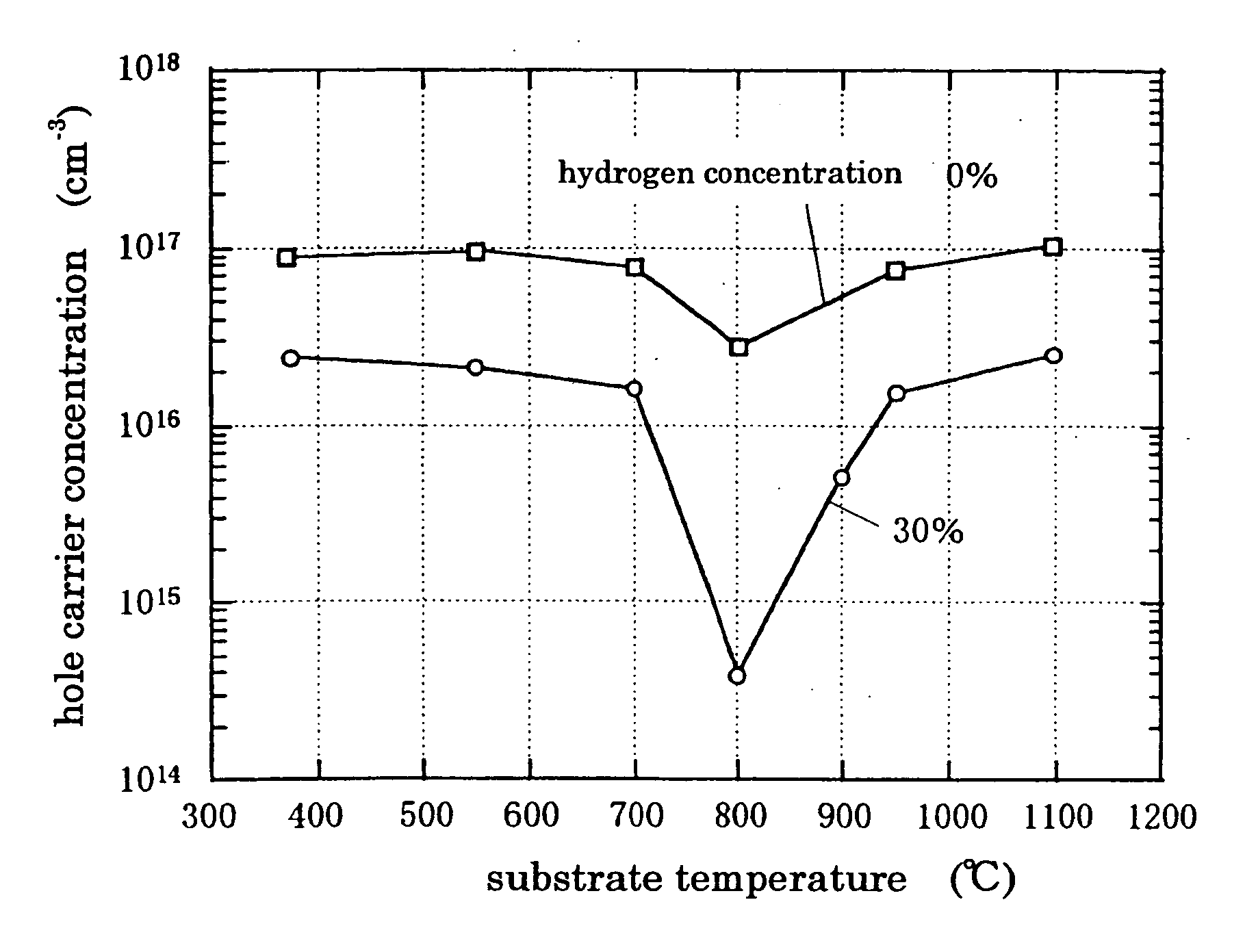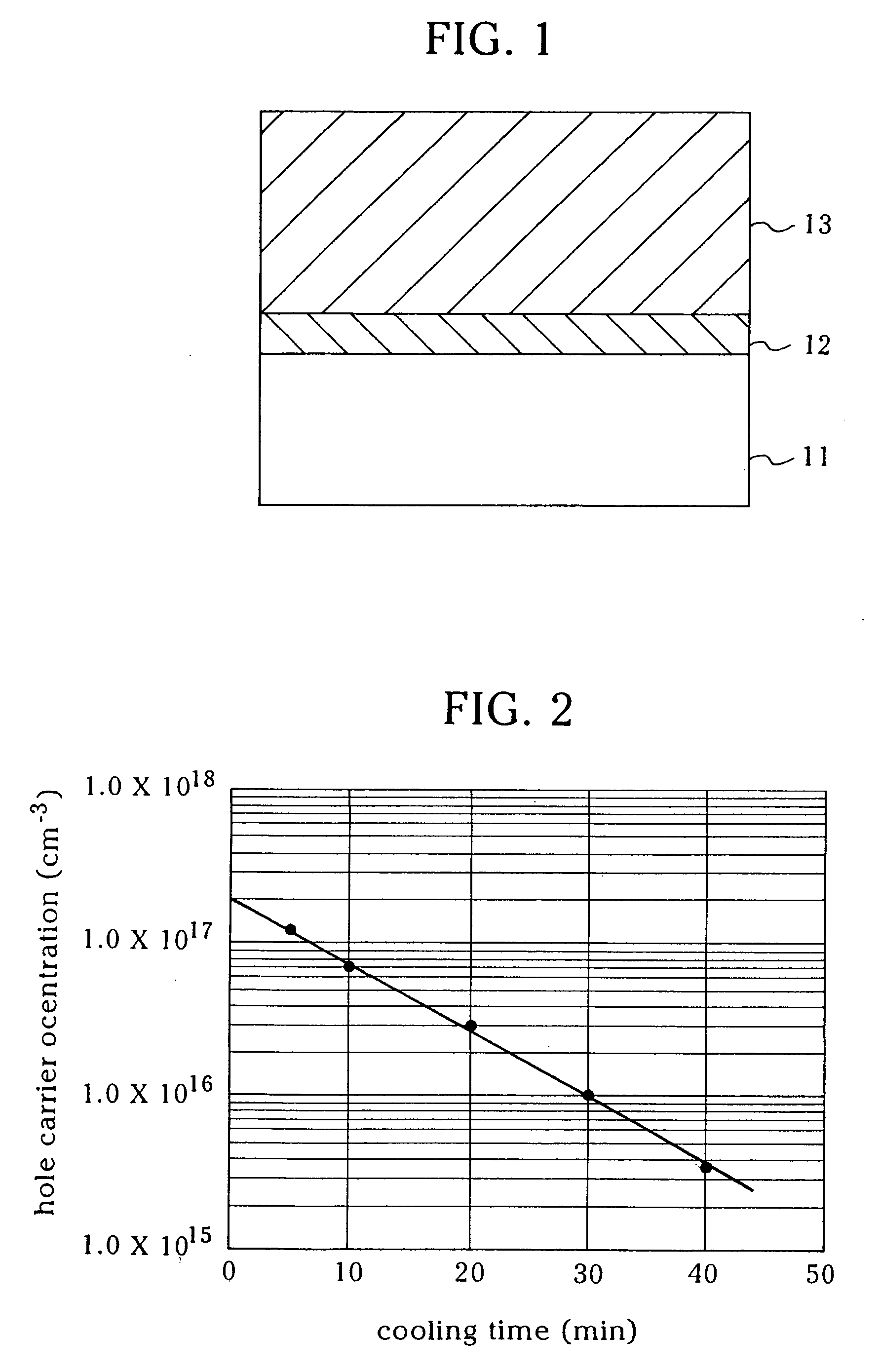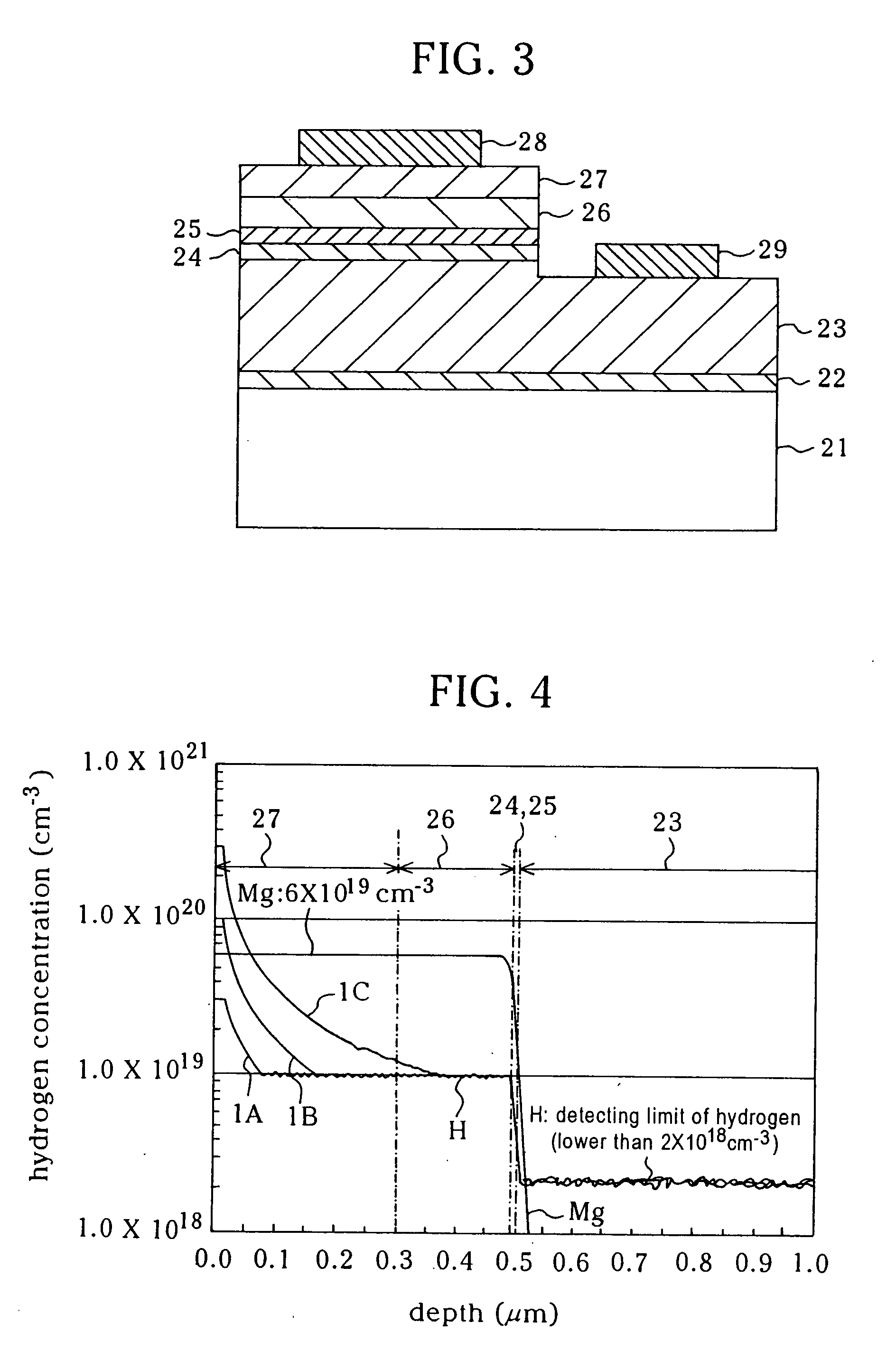P-type nitride semiconductor and method of manufacturing the same
a nitride semiconductor and nitride technology, applied in the field of p-type nitride semiconductor, can solve the problems of difficult to obtain a good crystal and difficult to provide a low resistivity nitride semiconductor, and achieve the effect of improving the activation ra
- Summary
- Abstract
- Description
- Claims
- Application Information
AI Technical Summary
Benefits of technology
Problems solved by technology
Method used
Image
Examples
embodiment 1
[0039] A first exemplary embodiment of the present invention is described with reference to the drawings.
[0040]FIG. 1 is a cross sectional view showing the structure of a p-type nitride semiconductor in accordance with a first exemplary embodiment of the present invention. On a substrate 11 made of sapphire, a buffer layer 12 formed of gallium nitride (GaN) for easing the lattice mismatch between a certain semiconductor to be grown on the substrate 11 and the sapphire, and a p-type nitride semiconductor layer 13 formed of GaN are stacked in the order.
[0041] Method for manufacturing the above p-type nitride semiconductor layer is described in the following. In the first place, the substrate 11 having a mirror-finished main surface is placed in a reaction chamber (not shown) and held by a substrate holder, and then temperature of the substrate 11 is raised to approximately 1000° C., and hydrogen gas is introduced on the substrate 11 while it is heated for approximately 10 min. Stain...
first modification of embodiment 1
[0049] Method for manufacturing p-type nitride semiconductor layer in accordance with a first modification example of embodiment 1 is described below.
[0050] First buffer layer 12 and p-type nitride semiconductor layer 13 having the hole carrier concentration of approximately 2×1017 cm−3 are formed in the order on the substrate 11, as shown in FIG. 1, through the same method as in embodiment 1.
[0051] Dependence, during the cooling process in the first modification example, of the hole carrier concentration on concentration of hydrogen gas contained in the ambient gas is described below. The hole carrier concentration was measured with those which have undergone four different atmospheres having different hydrogen gas concentration, 0%, 30%, 50% and 70%. Concentration of ammonia, NH3, gas in each of the atmosphere was approximately 20%, and remainder of nitrogen gas. The substrate was cooled from approximately 1050° C., or the growth temperature, to approximately 600° C. in approxim...
second modification of embodiment 1
[0058] Method for manufacturing p-type nitride semiconductor layer in accordance with a second modification example of embodiment 1 is described below.
[0059] First buffer layer 12 and p-type nitride semiconductor layer 13 having the hole carrier concentration of approximately 2×1017 cm−3 are formed in the order on the substrate 11, as shown in FIG. 1, through the same method as in embodiment 1.
[0060] Dependence, during the cooling process in the second modification example, of the hole carrier concentration on concentration of ammonia, NH3, gas contained in the atmosphere is described. Concentration of hydrogen gas in the atmosphere was approximately 15%, and remainder of nitrogen gas. The substrate was cooled from approximately 1050° C., or the growth temperature, to approximately 600° C. in approximately 5 min.
[0061] As a result of the measurement, it has been confirmed that there is hardly any difference in the rate of decrease during the cooling process in the hole carrier co...
PUM
| Property | Measurement | Unit |
|---|---|---|
| temperature | aaaaa | aaaaa |
| temperature | aaaaa | aaaaa |
| hole carrier concentration | aaaaa | aaaaa |
Abstract
Description
Claims
Application Information
 Login to View More
Login to View More - R&D
- Intellectual Property
- Life Sciences
- Materials
- Tech Scout
- Unparalleled Data Quality
- Higher Quality Content
- 60% Fewer Hallucinations
Browse by: Latest US Patents, China's latest patents, Technical Efficacy Thesaurus, Application Domain, Technology Topic, Popular Technical Reports.
© 2025 PatSnap. All rights reserved.Legal|Privacy policy|Modern Slavery Act Transparency Statement|Sitemap|About US| Contact US: help@patsnap.com



